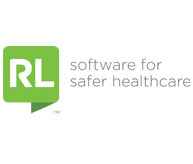Resource:
The New Kid on the Block: Arkansas Children's Hospital
Learn how Arkansas Children's Hospital overcame the challenges of new staff and a new event reporting system.
THE CHALLENGE: Consolidate multiple tracking systems
Arkansas Children’s Hospital (ACH) was using three systems to track safety events at their facilities including paper incident forms and two separate electronic systems. In 2011, they decided to switch to a ‘one-stop shop’ and chose RL6:Risk from RL Solutions. ACH went live in April 2012 with RL6:Risk, dubbing it “Safety Tracker” internally. Following the implementation, the person responsible for administering Safety Tracker left to take on another role. Christi Long and Pam Trevino, both of the Innovation and Improvement department, had to ramp up quickly with little expertise. Trevino had attended the administrator training, but had not used the skills she learned on a routine basis. As well, Long had learned some things from the prior system administrator and RL Solutions training sessions. They set out to quickly learn RL6:Risk to ensure continuity of care at the hospital.
THE SOLUTION: Easy-to-learn system with customizable forms
Arkansas Children’s Hospital leaned heavily on the RL Solutions technical support and client excellence teams to get them up to speed on RL6:Risk quickly, so they could act as administrators and front-line support for the hospital’s staff. Pam Trevino, the ACH Director of Clinical Risk Management, jokes, “Luckily, we learned that you can’t break the system, no matter how hard you try!”
In turn, the risk and quality team at ACH trained the hospital’s front-line staff on RL6:Risk with a 10 minute training video. Even with that minimal training, incident submissions have still gone up. ACH started with a generic incident reporting form and customized forms in RL6:Risk for specific safety events:
- Referring physician
- HIPAA
- Environmental safety
- Patient and family representatives
- Peer review
- Pharmacy intervention
In addition, ACH has a Victory Vision form set to roll out in the next few months. This form will allow for a new way to track employees who receive a Victory Vision pin for exemplifying one of the hospital’s 12 behavioral standards focused on quality of care This is the only form in Safety Tracker that’s not related to capturing safety events; however, it does promote quality patient care and exceptional performance.
Christi Long, the ACH Improvement and Innovation Project Manager, says her team “loves how RL6:Risk doesn’t come prepacked” and the ability to customize event forms has helped promote event reporting. The ACH Patient Safety Program Manager, Stephanie Evans, points to the ability to easily report events “rather than a big, long paper trail that may or may not get completed” as another important benefit that ACH has received from RL6.
As a pediatric hospital, ACH has specific challenges that are different from acute healthcare facilities. Luckily, RL6:Risk’s customizable forms have helped them address these unique challenges head on. For example, unlabeled, mislabelled or clotted specimens are problems at all healthcare organizations because they lead to additional procedures, delaying patient care. When the patient is an adult, an additional blood draw or needle stick is an inconvenience, but “another poke is a big deal when you’re five or six years old,” explains Trevino. Before RL6, ACHdid not capture these events well. With RL6, they’ve been able to track specimen issues that require additional ‘pokes’ and implement new ways to reduce unlabeled, mislabelled or clotted specimens.
THE RESULTS: Capture more incidents, faster follow-up
Since ACH implemented RL6:Risk, the hospital captures an average of 500% more events every month including adverse events, near misses and good catches. In fact, ACH has been so successful with the system that the hospital awards a Good Catch of the Month to its employees.
One of the greatest disadvantages with ACH’s previous electronic systems was that follow-up was a linear process: a single form could only be sent to one person at a time. With Safety Tracker, multiple recipients can receive the same file simultaneously and risk management can perform follow-up and close files much faster. For example, Safety Tracker counts how long it has been since there was any work done on a file. If a file passes three days with no activity, the system notifies the unit manager and after seven days, it emails the hospital’s appropriate vice president.
Unlike other facilities that struggle to promote physician event reporting, ACH has been lucky enough to have physicians who are early adopters including the chief of staff (who is also section chief of anesthesia). The influence of these prominent early adopters, along with the risk management team’s efforts to thank physicians who submit events, has encouraged continued physician reporting.
Download the full case study for more information, including next steps for continued success.

